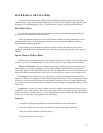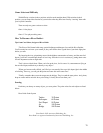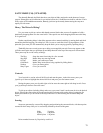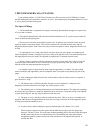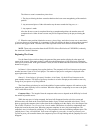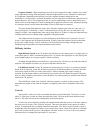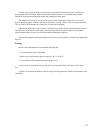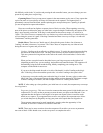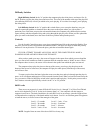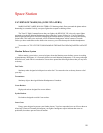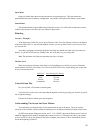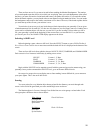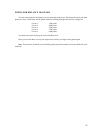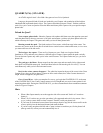left difficulty switch in the "a" position and pressing the red controller button, you can exchange your new
queen for any other piece except a king.
Capturing Pieces: Pieces (except pawns) capture in the same manner as they move. If any square that
a piece can move to is occupied by an enemy unit, that unit can be captured. The captured piece is
permanently removed from the board, and the capturing piece occupies that space. Capturing is optional -
you are not required to capture when able to.
Pieces are not allowed to displace or capture pieces of their own color. When capturing or moving,
none of the pieces are allowed to jump over other units, except the knight. Traditionally, the capture of the
king is never actually carried out. If the king is under attack but has room to escape, it is said to be in
"check." The Video Chess(TM) computer has a very distinct way to show when a king is in check which you
will see during the course of a game. If the king is attacked and there is no way to escape, it is said to be
"checkmated," and the game ends.
Double Moves: There are two "double moves" allowed in the game of chess. One is known as
"castling," the other is known as "en passant." The Video Chess
(TM) computer may use either or both
during the course of a game, and you can also:
Castling - Castling can be an offensive or defensive move. To castle, the squares between the king
and one of the rooks must be clear. The king or the rook may not have been moved previously.
This move protects the king and moves the rook to the center of the board where it can be more
effective.
When you have set up the board as described, move your king two spaces to the right or left
(depending on which way you are castling), and push the red controller button. The computer will
automatically bring the rook around the king, thereby completing your castling move. The
computer will then think its next move.
If you move the king toward the rook on its side of the board it is called "castling to the king's
side." If the king is moved toward the queen's side, it is called "castling to the queen's side."
A player may not use the castling move when the king is in check. Nor may a player castle to the
king's side if any of the squares between the king and the rook are threatened. The former example
is called "castling out of check"; the later example is known as "castling across check."
NOTE: If, after setting up a chess problem, your initial move is to castle, the computer may not accept
it as a legal move.
En passant (in passing) - This move is used to counteract the enemy pawn's initial double move on
a adjacent file. To carry out the en passant you must advance your pawn to the fifth rank. Your
opponent then has the option of moving his or her pawn one square (where it would be under
attack) or two squares. If you opponent elects to move two squares, the en passant move allows
you to take that pawn by diagonally moving your pawn to the square that was skipped over.
The en passant capture must be made immediately, meaning when the opportunity is first
available, or not at all. It cannot be executed at a later turn.
NOTE: There may be some occasions where the computer will not allow you to use en passant to
move out of check. If this should occur, use the set-up move to complete the move.
85



